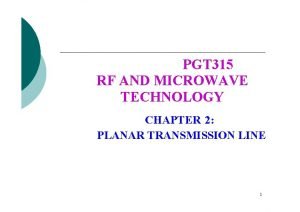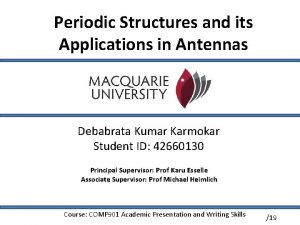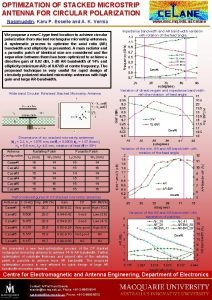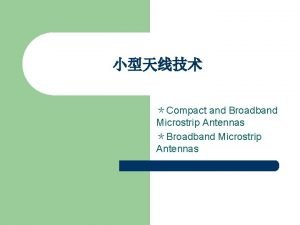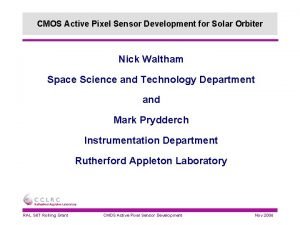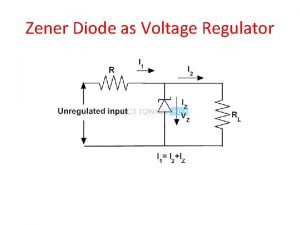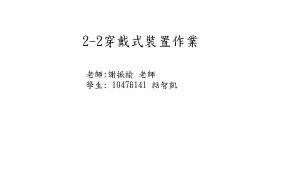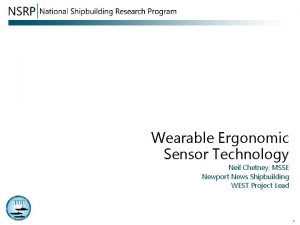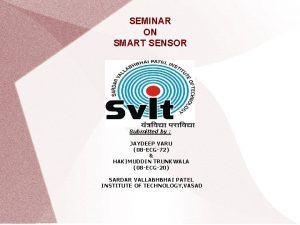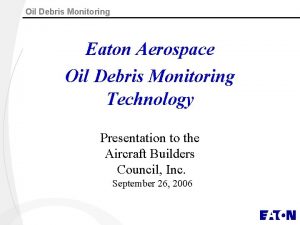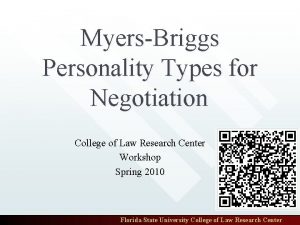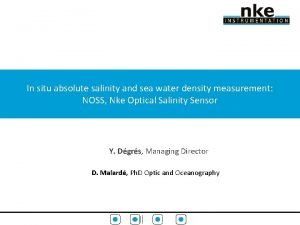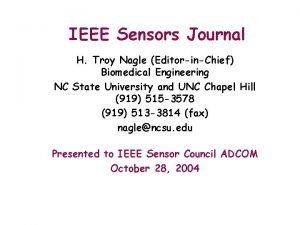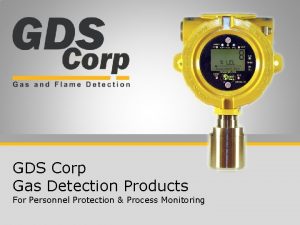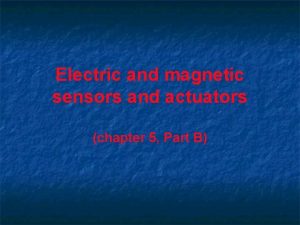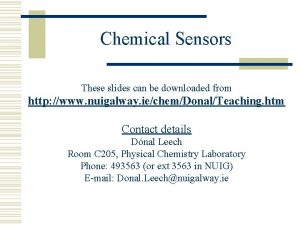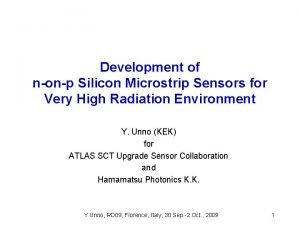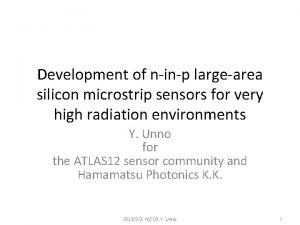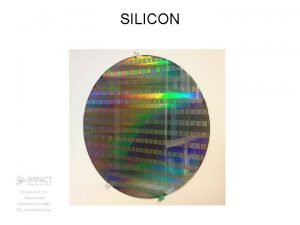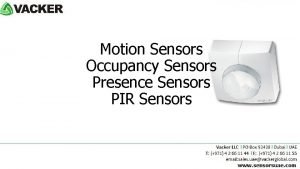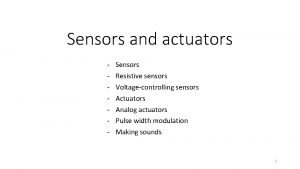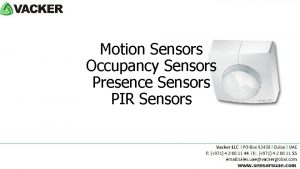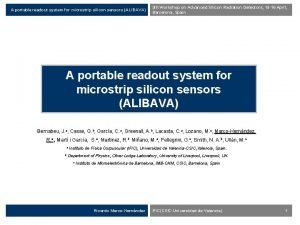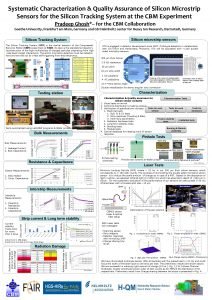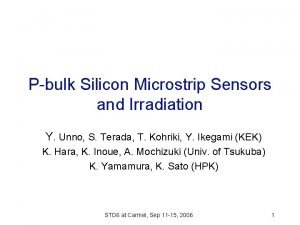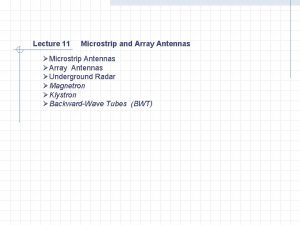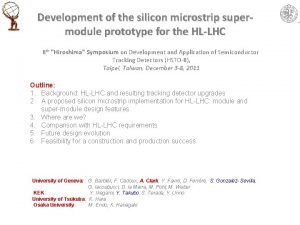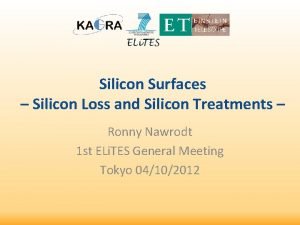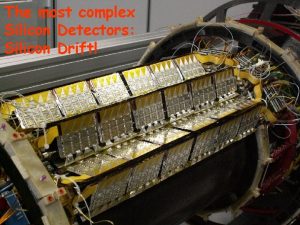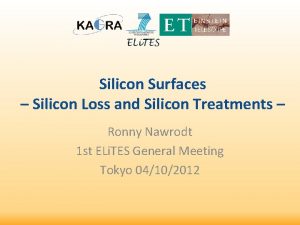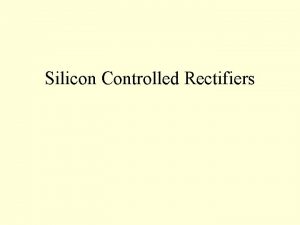Development of Silicon Microstrip Sensors in 150 mm


















- Slides: 18

Development of Silicon Microstrip Sensors in 150 mm p-type Wafers Y. Unno, S. Terada, Y. Ikegami, T. Kohriki, K. Hara, and the ATLAS R&D collaboration of "Development of noninverting Silicon strip detectors for the ATLAS ID upgrade" K. Yamamura, S. Kamada (Hamamatsu Photonics) Y. Unno, 3 rd Workshop on Advanced Silicon Radiation Detectors, Barcelona, Spain, 14 -16 April. 2008

Some History of Development • 1995 p-type 4 -inch (100 mm) wafer (p 95) – FZ(111) (~6 kΩcm) wafers • 2005 p-type 4 -inch (100 mm) wafer (ATLAS 05) – FZ(111) (~6 k Ωcm) – MCZ(100) (~900 Ωcm) wafers • 2006 p-type 6 -inch (150 mm) wafer (ATLAS 06) – FZ-1(100)(~6. 7 k Ωcm), FZ-2(100)(~6. 2 k Ωcm) – MCZ(100)(~2. 3 k Ωcm) • 2007 p-type 6 -inch (150 mm) wafer (ATLAS 07) – FZ-1(100)(~6. 7 k Ωcm), FZ-2(100)(~6. 2 k Ωcm) Y. Unno, 3 rd Workshop on Advanced Silicon Radiation Detectors, Barcelona, Spain, 14 -16 April. 2008

p 95 p-type Sensors • A prototype n-in-p sensor was fabricated in 1995 – 6 cm x 300 um, 50 um pitch, common p-stop • no DC-field plate over p-stop – p-bulk, (111), ~6 kΩcm – Irradiated up to 1. 1 x 1014 p/cm 2 at 12 Ge. V PS at KEK – A report was made in NIM A 383(96)159 – Re-measurements after 10 yrs (irrad. stored at 0 C) • I-V • CCE with laser Y. Unno, 3 rd Workshop on Advanced Silicon Radiation Detectors, Barcelona, Spain, 14 -16 April. 2008

ATLAS 05 p-type Sensors • Investigation of isolation of n-strips – p-stop with/without p-spray – With/without field-plate – p-stop doping levels Y. Unno, 3 rd Workshop on Advanced Silicon Radiation Detectors, Barcelona, Spain, 14 -16 April. 2008

ATLAS 05 p-type Sensors • p-type wafers – 4 -inch wafer for cost reason – MCZ: • ~900 Ωcm • Orientation (100) – FZ: • ~6 k Ωcm • Orientation (111) • Sensors – Miniature: 1 cm x 1 cm – Large: ((~1 cm x ~6 cm) x 6 zones) Y. Unno, 3 rd Workshop on Advanced Silicon Radiation Detectors, Barcelona, Spain, 14 -16 April. 2008

ATLAS 06 p-type Sensors • 6 inch (150 mm) wafer – FZ-1 (100), FZ-2 (100), MCZ • Further R&D of isolation structures – No DC-field plate – Width of (common) p-stop – p-stop/p-spray doping variations Y. Unno, 3 rd Workshop on Advanced Silicon Radiation Detectors, Barcelona, Spain, 14 -16 April. 2008

ATLAS 06 p-type Sensors • Many miniature (1 cm x 1 cm) sensors – One sensor per one "Zone" • Large (3 cm x 6 cm) sensors with 2 striplets – Variation of Polysilicon bias resistor connections Y. Unno, 3 rd Workshop on Advanced Silicon Radiation Detectors, Barcelona, Spain, 14 -16 April. 2008

ATLAS 07 p-type Sensors • 6 -inch (150 mm) wafer • Maximum size sensor (~10 cm x ~10 cm) prototyping • R&D's – – Candidate isolation structures "Punch-thru Protection" structures Wide/Narrow metal effect Wide/Narrow pitch effect Y. Unno, 3 rd Workshop on Advanced Silicon Radiation Detectors, Barcelona, Spain, 14 -16 April. 2008

ATLAS 07 p-type Sensors • Full size (9. 75 cm x 9. 75 cm) prototype sensors – 4 segments: two "axial" and two "stereo" (inclined) strips Y. Unno, 3 rd Workshop on Advanced Silicon Radiation Detectors, Barcelona, Spain, 14 -16 April. 2008

Proton Irradiation at CYRIC KEK 70 Me. V protons Beamline 32 Beamline 31 -2 • Facility associated with Univ. Tohoku, Sendai, Japan Y. Unno, 3 rd Workshop on Advanced Silicon Radiation Detectors, Barcelona, Spain, 14 -16 April. 2008

Proton irradiations at CYRIC • AVF Cyclotron at Tohoku University – Beam energy: 70 Me. V – Beam intensity: 10 n. A ~ 800 n. A – Beam spot size: ~5 mm FWHM • ~4 min. for 1 x 1015 at 800 n. A • Irradiation history – Beamline 31 -2 • 2005. 10. 17 - 1 st and beamline study • ATLAS 05 - up to 5 x 1015 Beamline 31 -2 – 2006. 01. 27 +2006. 03. 14 +2006. 26 + 2006. 10. 16 • ATLAS 06 - up to 2 x 1015 – 2007. 05. 18, – Beamline 32 – 2007. 08. 28 • ATLAS 07 - up to 1 x 1015 – 2008. 03. 11 • Change of beamline – Machine time/user conflict in 31 – Straight, simpler line in 32 Beamline 32 Y. Unno, 3 rd Workshop on Advanced Silicon Radiation Detectors, Barcelona, Spain, 14 -16 April. 2008

Laser for FDV and CCE • Full Depletion Voltages (FDV) – C-V method – Laser method • Charge Collection Efficiencies (CCE) – Laser method Reference sensor Pulsed laser (1064 nm) focused to 4 um x 4 um Y. Unno, 3 rd Workshop on Advanced Silicon Radiation Detectors, Barcelona, Spain, 14 -16 April. 2008

Full Depletion Voltages ATLAS 05 CCE ATLAS 06 CV CCE CV • Very different fluence development in 4 inch and 6 inch!! – All p-type – 4 inch FZ (111), though • FZ and MCZ are similar in 6 inch!! – except below ~2 x 1014 , no advantage in MCZ FDV~500 V!! at 1 x 1015 Y. Unno, 3 rd Workshop on Advanced Silicon Radiation Detectors, Barcelona, Spain, 14 -16 April. 2008

CCE ATLAS 05 ATLAS 06 not fully depleted VB=1 k. V • Charge loss up to 1 x 1015 is small – 2 x 1015 appreciably less • No obvious difference is FZ and MCZ Y. Unno, 3 rd Workshop on Advanced Silicon Radiation Detectors, Barcelona, Spain, 14 -16 April. 2008

Microdischarge • Onset voltage (VMD) ATLAS 06 – >600 V in FZ – some trouble in MCZ – Zone 5 exceptional • After irradiation (>1 x 1014) – >1000 V!! – Even Zone 5 and MCZ Y. Unno, 3 rd Workshop on Advanced Silicon Radiation Detectors, Barcelona, Spain, 14 -16 April. 2008

N-strip Isolations + p-spray • Showing Vbias voltages to achieve isolation – Isolation gets worse as fluence accumulates – Number of observations can be seen from the plots. . Y. Unno, 3 rd Workshop on Advanced Silicon Radiation Detectors, Barcelona, Spain, 14 -16 April. 2008

TCAD Simulations • N-P gap was too narrow • Potential of 2 nd p-stops makes effective p-stop width as wide up to 2 nd p-stop Y. Unno, 3 rd Workshop on Advanced Silicon Radiation Detectors, Barcelona, Spain, 14 -16 April. 2008

Summary • n-in-p p-type microstrip sensors have been fabricated in p-FZ and p. MCZ wafers, for several years by now • Proton irradiations, 70 Me. V, are being routinely carried out at CYRIC of Tohoku Univ. , • Fluence development of full depletion voltage (FDV) of 4 -inch (100 mm) and 6 -inch (150 mm) is very different • In 6 -inch, FDV is ~500 V at 1 x 1015 neq/cm 2 • CCE is near full up to 1 x 1015 neq/cm 2 • Onset voltage of the microdischarge has been achieved to be >600 V in general • Number of isolation structures are being investigated and we are narrowing the candidates • A full size microstrip sensor has been prototyped and we have the first look in hand Y. Unno, 3 rd Workshop on Advanced Silicon Radiation Detectors, Barcelona, Spain, 14 -16 April. 2008
 Microstrip transmission line
Microstrip transmission line Microstrip transmission line
Microstrip transmission line Nasimuddin+microstrip+antennas
Nasimuddin+microstrip+antennas Broadband microstrip antennas
Broadband microstrip antennas Development of solar sensors
Development of solar sensors Asia silicon valley development agency
Asia silicon valley development agency Zener diode equations
Zener diode equations Wearable inertial sensors
Wearable inertial sensors Wearable ergonomic sensors
Wearable ergonomic sensors Smart washroom system
Smart washroom system Conclusion of smart sensors
Conclusion of smart sensors Monitor engine oil debris
Monitor engine oil debris Sensors vs intuitives
Sensors vs intuitives Peas in ai examples
Peas in ai examples Density of sea water
Density of sea water Ieee sensors journal submission
Ieee sensors journal submission Gds corp
Gds corp Kmz10b
Kmz10b Chemical sensors ppt
Chemical sensors ppt
